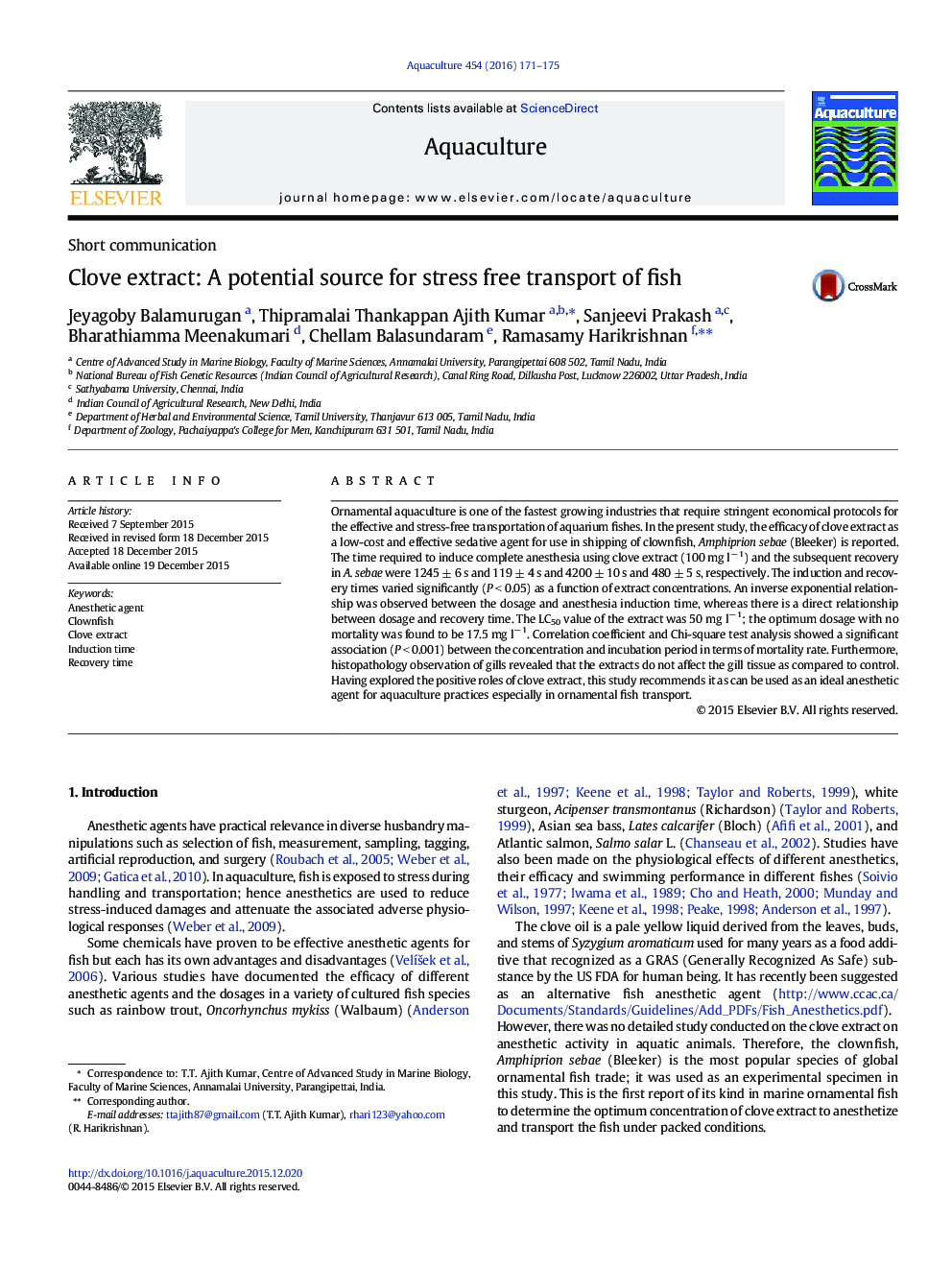| کد مقاله | کد نشریه | سال انتشار | مقاله انگلیسی | نسخه تمام متن |
|---|---|---|---|---|
| 2421511 | 1552833 | 2016 | 5 صفحه PDF | دانلود رایگان |
• Efficacy of clove extract was ensuing low-cost sedative agent in shipping of clown fish.
• Complete anesthetic induction and recovery times were 1245 ± 6 s and 119 ± 4 s; clove oil, 4200 ± 10 s and 480 ± 5 s at 100 mg l− 1, respectively.
• LC50 value of the extract was 50 mg l− 1 and 17.5 mg l− 1 as the optimum dosage with no mortality.
• Histopathology observation of gills revealed that the extracts prevent the damages in gill tissues compared to controls.
Ornamental aquaculture is one of the fastest growing industries that require stringent economical protocols for the effective and stress-free transportation of aquarium fishes. In the present study, the efficacy of clove extract as a low-cost and effective sedative agent for use in shipping of clownfish, Amphiprion sebae (Bleeker) is reported. The time required to induce complete anesthesia using clove extract (100 mg l− 1) and the subsequent recovery in A. sebae were 1245 ± 6 s and 119 ± 4 s and 4200 ± 10 s and 480 ± 5 s, respectively. The induction and recovery times varied significantly (P < 0.05) as a function of extract concentrations. An inverse exponential relationship was observed between the dosage and anesthesia induction time, whereas there is a direct relationship between dosage and recovery time. The LC50 value of the extract was 50 mg l− 1; the optimum dosage with no mortality was found to be 17.5 mg l− 1. Correlation coefficient and Chi-square test analysis showed a significant association (P < 0.001) between the concentration and incubation period in terms of mortality rate. Furthermore, histopathology observation of gills revealed that the extracts do not affect the gill tissue as compared to control. Having explored the positive roles of clove extract, this study recommends it as can be used as an ideal anesthetic agent for aquaculture practices especially in ornamental fish transport.
Journal: Aquaculture - Volume 454, 1 March 2016, Pages 171–175
